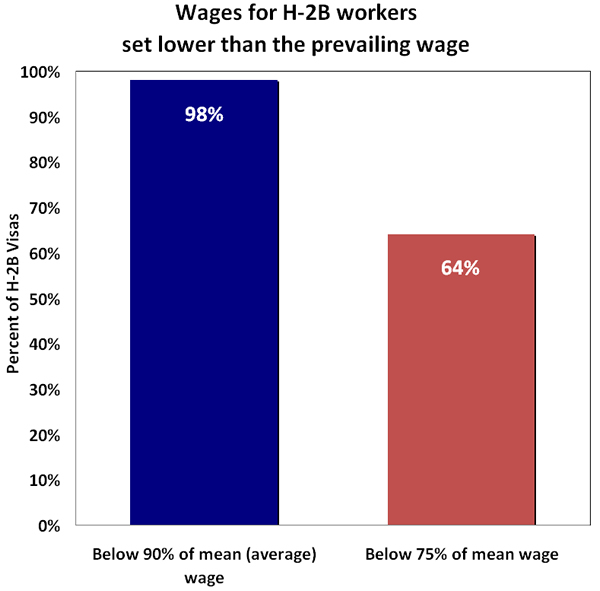See Snapshots archive.
Snapshot for August 13, 2008.
Wages for H-2B workers set lower than the prevailing wage
By Denice Velez
The U.S. Department of Labor (DOL) sets the wage that must be offered to U.S. workers before employers can request temporary immigrant workers under the H-2B visa program. By law, the H-2B wage must be high enough so as not to adversely affect the wages of similarly employed U.S. workers, and so DOL regulations require employers to pay these immigrants the area’s prevailing wage.
However, examination of seven of the occupations most commonly filled by H-2B workers, including construction and grounds maintenance, in 15* states in 2007 shows that in almost every case, H-2B certified wages were lower than the prevailing wage reported by the Bureau of Labor Statistics. In 64% of cases, the DOL-certified wage fell below 75% of the mean hourly wage.
Allowing employers to pay H-2B wages below the prevailing wage discourages American workers from applying for those jobs, thus creating the false impression of a labor shortage. These wages also harm H-2B workers because they receive lower wages than they are entitled to by law. Furthermore, qualified U.S. workers are denied jobs, and workers’ wages in the area of employment are undermined.
* The 15 states—Calif., Wash., Ariz., Nev., Ill., Mich., Minn. Fla., Miss., Va., Texas, Mass., Maryland, N.Y., Pa.—were chosen because they are a nationally representative sample from every region of the country.

